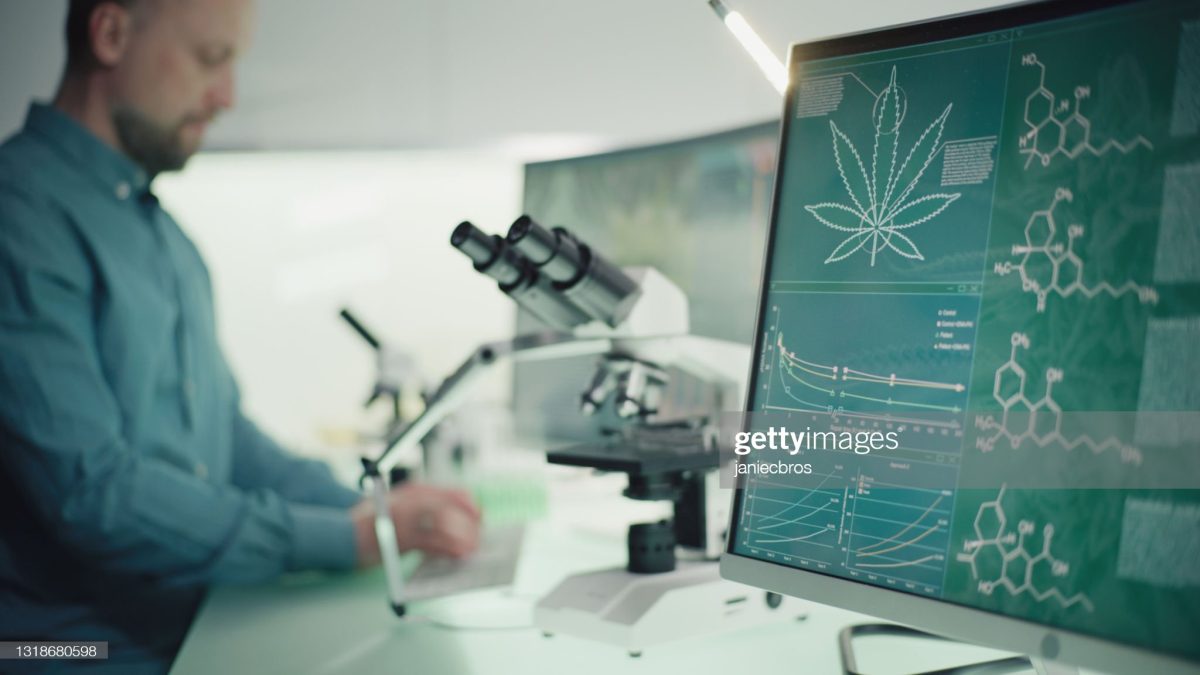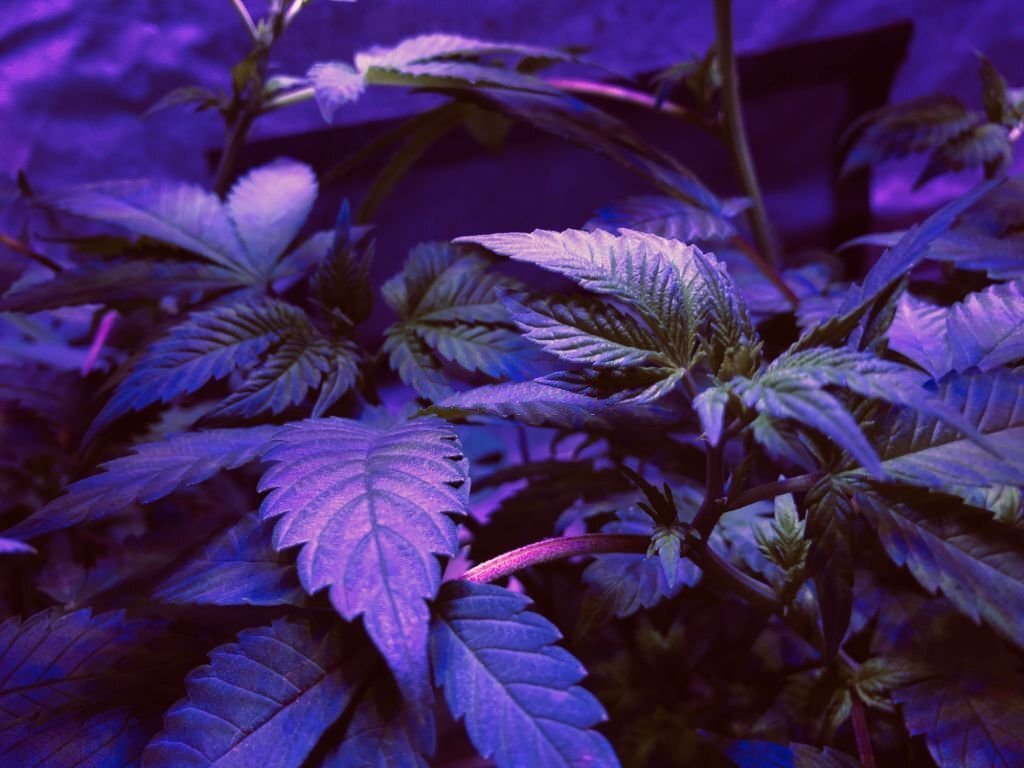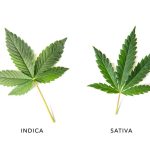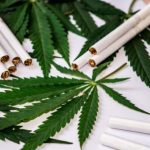🔥 Website for Sale - Contact Us
Ah, the ever-mysterious world of cannabis leaves turning purple during flowering – as if they didn’t already have enough going for them with their mind-altering properties, these lovely botanical specimens decided to throw us another curveball by having their leaves turn purple during flowering.
In this article, we explore the world of leaves turning purple DURING flowering by answering the seven most relevant questions and factors influencing this natural process.
What Causes the Purple Color in Cannabis Leaves During Flowering?
The primary driver of the purple coloration in cannabis leaves is a group of pigments called anthocyanins. In cannabis, genetics play a significant role in determining anthocyanin production, with certain strains more likely to experience purple coloration. Environmental factors, such as temperature and pH, can also influence anthocyanin levels, either enhancing or suppressing the purple hues.
How Do Temperature Changes Affect the Color Transformation in Cannabis?
Cooler temperatures, particularly during the night, can stimulate anthocyanin production in cannabis plants. When the temperature drops below 50°F (10°C), it triggers a natural response in the plant to produce more anthocyanins. This increased production results in more vibrant purple coloration.
How Does pH Influence the Purple Coloration in Cannabis Leaves?
Ideal pH levels for cannabis range between 6.0 and 7.0. When pH levels are outside of this range, nutrient uptake can be disrupted, impacting anthocyanin production and the resulting color transformation.
What Role Do Nutrients Play in Cannabis Color Transformation?
A balanced and sufficient supply of nutrients is crucial for healthy cannabis growth. Key nutrients, such as nitrogen, phosphorus, and potassium, help facilitate various plant processes, including color development. Nutrient deficiencies or excesses can affect the overall health of the plant, potentially influencing the color of the leaves. For instance, a phosphorus deficiency can result in purple or reddish hues on the leaves.
Are Purple Cannabis Strains More Potent or Flavorful?
While purple cannabis strains are visually appealing, their color does not necessarily correlate with increased potency or enhanced flavor. The factors that determine a strain’s potency and flavor profile are primarily genetic, with growing conditions playing a secondary role. It’s essential not to judge a strain’s potency or flavor solely based on its color.
What Are Some Popular Purple Cannabis Strains and Their Unique Characteristics?
Several well-known purple cannabis strains exhibit distinct characteristics. Some popular examples include:
Granddaddy Purple: Known for its grape-like aroma and relaxing effects, this strain is a favorite among indica lovers.
Purple Haze: A sativa-dominant hybrid, Purple Haze features a fruity flavor profile and delivers a euphoric, energetic high.
Purple Kush: This pure indica strain is celebrated for its earthy, sweet flavor and powerful, sedative effects.
II. The Colorful World of Genetics: Because it’s all in the genes, right?

A. The marvelous role of anthocyanins in creating purple hues
Ah, anthocyanins – the unsung heroes behind the stunning purple shades in cannabis leaves. These water-soluble pigments, responsible for the red, blue, and purple colors in various plants, are here to save the day (or, at least, to paint it purple). Just think of anthocyanins as the Picassos of the plant world, tirelessly working to create a visually striking cannabis masterpiece.
B. Intriguing strains that are just born to be purple
Some cannabis strains are simply destined for a life in purple, all thanks to their genetic makeup. These lucky plants boast higher levels of anthocyanins, making them more likely to develop purple leaves during flowering. A few famous examples include the ever-popular Purple Haze, Granddaddy Purple, and Purple Urkle – strains that sound like they belong in a Dr. Seuss book but are, in fact, very real.
III. Nutrient Imbalances: When plants can’t get enough of that good stuff
Brace yourself for an adventure into the realm of nutrient imbalances and their role in creating those eye-catching purple cannabis leaves.
A. Phosphorus deficiency and its uncanny link to purple leaves
You might be wondering, “Why on Earth would a nutrient deficiency cause leaves to turn purple?” A phosphorus deficiency in cannabis plants can cause the leaves to turn purple. That’s right – when cannabis plants can’t get enough of this essential nutrient, they throw a color-changing tantrum, and the result is a fabulous display of purple leaves. Who knew phosphorus could be such a drama queen?
B. How other nutrient deficiencies might make things even more colorful
Phosphorus isn’t the only nutrient that can cause a vibrant display in cannabis leaves. Other nutrient deficiencies, such as potassium and magnesium, might also join the party, adding their own unique twists to the color palette. It’s like a kaleidoscope of chaos caused by nutrient-starved cannabis plants. The result is a psychedelic display that would make even the most experienced growers raise an eyebrow.
In conclusion, nutrient imbalances can turn the ordinary world of cannabis cultivation into a vivid technicolor dream. Just remember that while these dazzling purple leaves might make for great conversation starters, they’re ultimately a cry for help from your nutrient-deprived cannabis plants. So, keep an eye on those nutrients, or you might find yourself in a garden full of drama.
IV. Environmental Factors: Mother Nature’s way of playing with colors
As if genetics and nutrients weren’t entertaining enough, it’s time to explore the role environmental factors play in turning our beloved cannabis leaves purple. Get ready for a thrilling ride through Mother Nature’s twisted sense of humor and discover how she loves to play with colors.
A. Temperature’s masterful control over purple cannabis leaves
Did you know that temperature swings can turn your cannabis leaves purple? It’s like Mother Nature’s personal thermostat controlling the colors of your plants. During the flowering stage, cooler temperatures – especially at night – can coax those anthocyanins out of hiding, revealing the purple hues lurking beneath the surface. It’s almost as if the plants are trying to stay fashionable by changing their wardrobe according to the weather.
B. Unraveling the mystery of light and its role in this vibrant show
What’s a colorful spectacle without some dazzling lights? The role of light in the development of purple cannabis leaves is still somewhat mysterious, but it’s believed that variations in light spectrum may influence the expression of anthocyanins. It’s as if the plants are putting on a show, waiting for the perfect lighting to strut their purple stuff on stage.
In summary, environmental factors like temperature and light can have a profound impact on the color of cannabis leaves. It’s as if Mother Nature is an artist, using her environmental paintbrush to create stunning displays of purple foliage. So, as you admire the beauty of purple cannabis leaves, don’t forget to tip your hat to the real mastermind behind this vibrant show – Mother Nature herself.
V. Purple Cannabis Leaves: To love or to loathe?
Exploring the fascinating world of genetics, nutrients, and environmental factors, we’re faced with a burning question: Are purple cannabis leaves all they’re cracked up to be? Or are we just suckers for a pretty face? Let’s examine the perplexing dilemma of whether to love or loathe these eye-catching purple leaves.
A. How this purple trend impacts cannabis quality and potency
While purple cannabis leaves might make for fabulous Instagram photos, do they actually have any impact on the quality and potency of the plant? The answer is… it’s complicated. While the presence of anthocyanins might suggest some health benefits, it’s not entirely clear if this translates to a more potent or superior cannabis experience. But hey, who needs science when you’ve got a gorgeous purple plant to admire, right?
B. The hype around purple cannabis leaves and their influence on the market
It’s no secret that purple cannabis leaves have become something of a trend in recent years. But is this hype really justified, or are we just falling for clever marketing ploys? The truth is that while purple cannabis strains might not necessarily be more potent or of higher quality than their green counterparts, they sure do make a statement.
In the end, the debate over whether to love or loathe purple cannabis leaves comes down to personal preference. Some people might be captivated by their beauty and novelty, while others might prefer the tried-and-true appeal of classic green leaves. But one thing’s for sure: the world of cannabis would be a lot less colorful without these mesmerizing purple plants.
VI. Tips and Tricks: Who wouldn’t want to grow their own purple cannabis?
Now that you’re an expert in the fabulous world of purple cannabis leaves, it’s only natural that you’d want to cultivate your very own purple paradise. Let’s look at useful tips and tricks that will help you become the envy of your friends with a stunning, purple cannabis garden.
A. Breeding techniques for that perfect purple hue
If you want to grow purple cannabis, the first step is to choose the right genetics. Remember those fabulous anthocyanin-packed strains we mentioned earlier? They’re your ticket to purple paradise. By carefully selecting and crossbreeding strains with high anthocyanin levels, you’ll be well on your way to a purple cannabis wonderland. Just be prepared for your friends to question your sanity as you obsess over plant genetics.
B. Cultivating conditions for the most fabulous purple cannabis garden
Once you’ve got the right genetics, it’s time to create the perfect environment for your purple cannabis plants to flourish. Start by exposing your plants to cooler nighttime temperatures during the flowering stage, which will encourage the expression of those magnificent anthocyanins. And don’t forget about light – experimenting with different light spectrums might just unlock the full potential of your plants’ purple hues. Finally, be mindful of nutrients, ensuring that your plants receive the perfect balance to avoid any unwanted deficiencies (or unwanted bursts of color).
With these tips and tricks in hand, you’re well on your way to growing a truly fabulous purple cannabis garden. Whether it’s for personal enjoyment or to make your neighbors green with envy, there’s no denying the allure of these vibrant purple plants. Just remember, with great power (or, in this case, great purple) comes great responsibility – so use your newfound knowledge wisely.
VII. Conclusion: The not-so-secret truth behind leaves turning purple during flowering
Well, it’s been a wild ride through the colorful world of purple cannabis leaves, but it’s time to wrap things up with a neat conclusion. So, what have we learned about the not-so-secret truth behind leaves turning purple during flowering?
Several factors can cause cannabis leaves to turn purple, including genetics, nutrient imbalances, and environmental conditions. While anthocyanins might suggest some health benefits, it’s unclear if this translates to a more potent or superior cannabis experience. But one thing’s for sure – purple cannabis leaves are captivating, alluring, and undeniably trendy.





